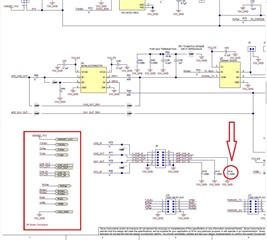Tool/software:
Hi all,
I was asked by a customer of mine what is the role of R14 on PCB schematics. Customer did not place this resistor on the PCB because the channel is driven, so they have assumed that it would have no impact.
Is it true?
So far I've only found a post in which it was only mentioned that R14 was necessary int the design without any explanation as to why.
Could you help me with this question?
BR,
Adam


